Grapevines tolerate extreme pruning! They benefit from yearly cuts during the dormant season. Prune them in the right way at the right time and they’ll reward you with bunches of grapes by late summer. Grape grower Jerad Bryant shares when and how it’s best to prune your vines.
Grapes grow on long, flexible vines that cling and twist with springy tendrils, much like squash or cucumber plants. Hardy, fast-growing, and able to withstand cold, grapevines are an excellent fruit crop for home gardens.
Since grapevines produce long, twining growth each year, they need regular pruning. Don’t shy away from heavy cuts—they’ll pay off with better harvests. We’ll explore two main pruning methods: cane pruning and spur pruning.
We’ll also look at different ways to train grapevines for the best yields. The right approach depends on your garden setup, why you’re growing grapes, and how you want the vines to look. But first, let’s talk about the best time to prune before diving into techniques.
When to Prune Grapevines
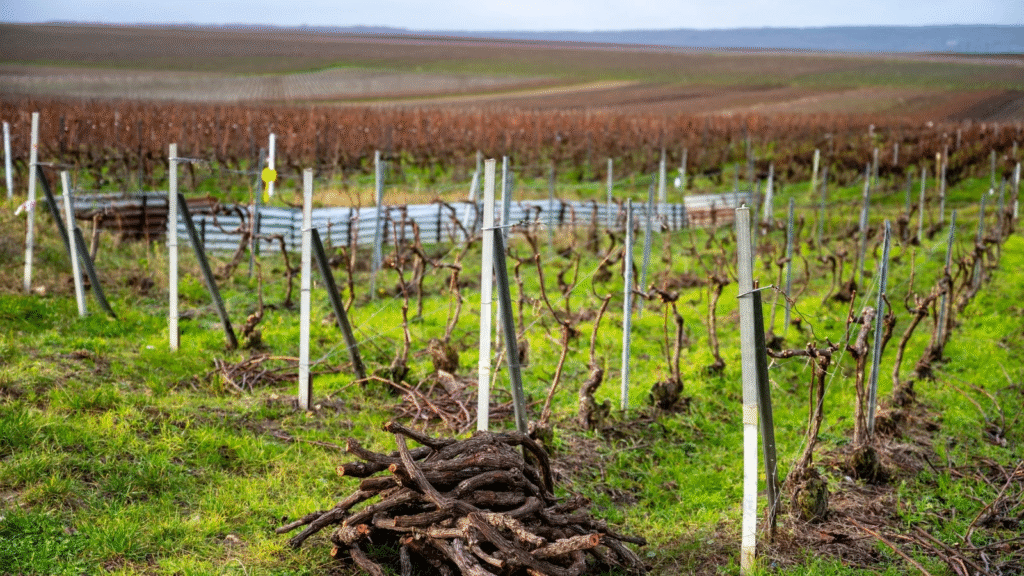
Prune Vitis vinifera while it’s dormant, between January and March, to focus energy on fruit production.
Grapevines benefit most from pruning during their dormant season. According to Erica Chernoh, a horticulturist with Oregon State University Extension Service, the ideal window is from January through early March. With no leaves, flowers, or fruit in the way, it’s easier to see where to make cuts.
Dormant pruning redirects the vine’s energy. Instead of putting all its effort into long, non-fruiting shoots, the plant will grow productive wood from your pruning points.
You can prune in spring or summer, but it’s riskier—open cuts are more prone to infections and pests during active growth.
When in doubt, wait until the vines are leafless but have visible new buds. Avoid pruning too early in December before buds form, and don’t wait until after they’ve opened. The perfect time is when buds start swelling on spurs and canes.
How to Prune Grapevines
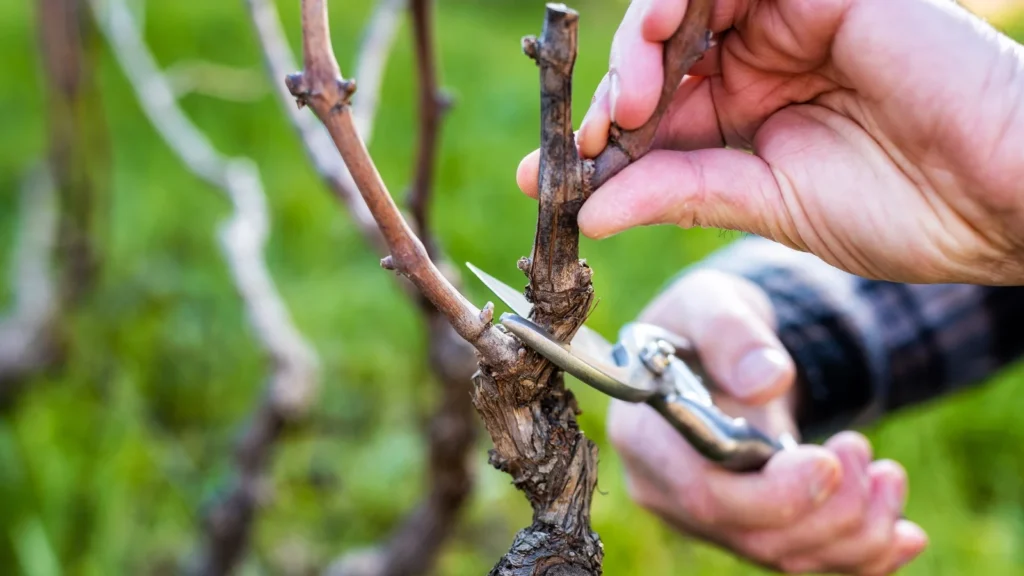
Your pruning method depends on the training system—some focus on spurs, others on fruiting canes.
The way you prune depends on how you’re training your vines. Some methods emphasize spurs, while others rely on new and old canes to build strong, fruit-bearing structures. Let’s figure out which approach works best for you!
Canes, Spurs, and Cordons
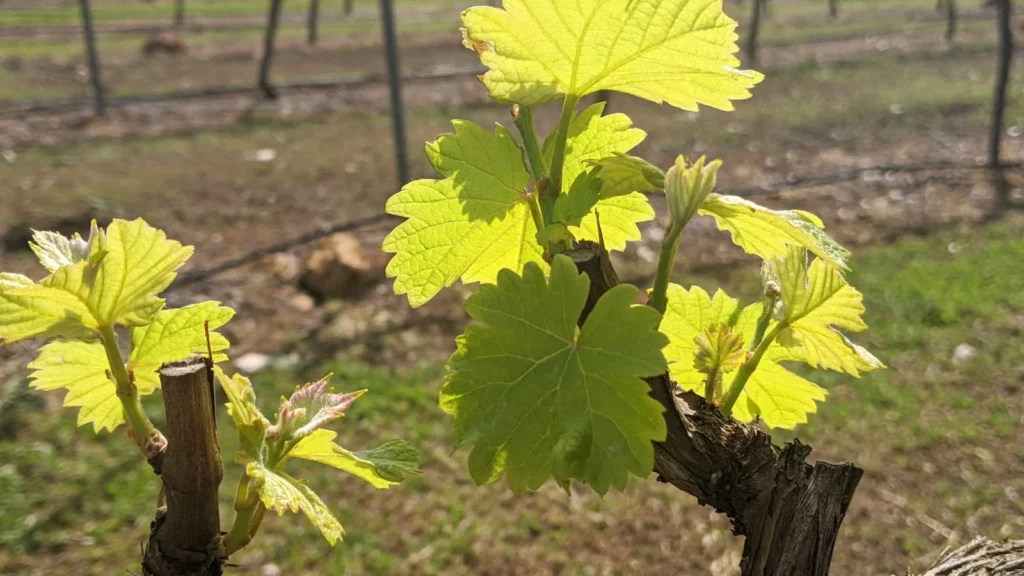
Understanding canes, spurs, and cordons helps structure Vitis vinifera plants for better fruit production.
Grape growing can get technical fast! If you’ve looked up pruning tips, you’ve probably seen terms like canes, spurs, and cordons. Though they sound fancy, they’re just ways to describe parts of the vine for maximum yield.
- Canes: Long, woody vines that grew over the past year.
- Spurs: Short sections of cane trimmed back to one to three buds.
- Cordons: Older canes (one year or more) that grow horizontally from the main trunk.
These terms help identify where grapes form—on one-year-old growth. By keeping a healthy mix of new and mature wood, you’ll ensure steady harvests. This year’s fruit comes from last year’s canes, while this year’s new growth becomes next year’s fruiting wood.
Training Systems
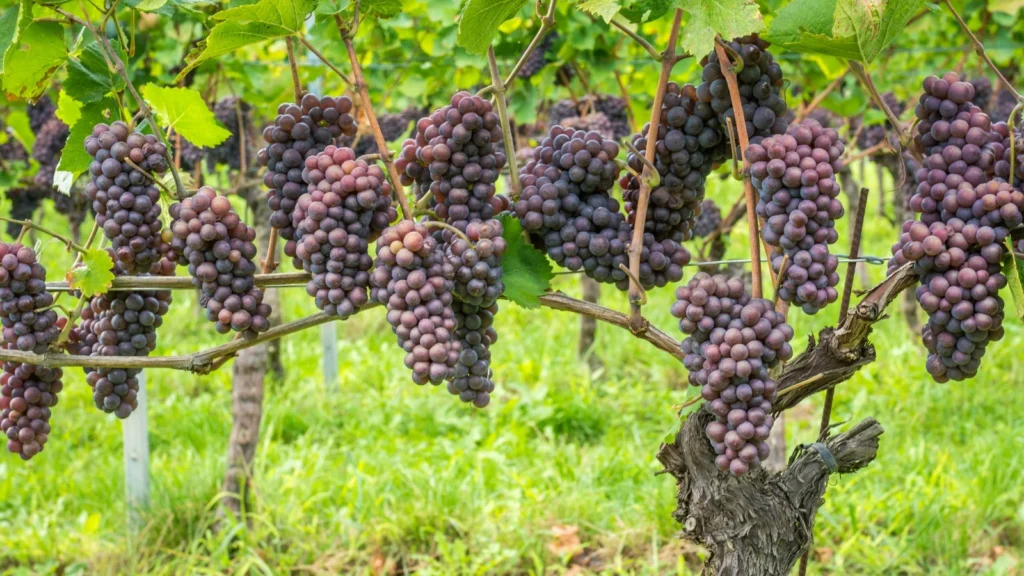
Bilateral cordon training works best for vineyards, while fan and arbor methods suit home gardens.
Now that we’ve covered the basics, let’s explore the best training systems for home growers. Commercial vineyards often use bilateral cordon training, but fan and arbor styles are more practical for backyard setups.
Bilateral Cordon

Keep only the trunk, cordons, and spurs, shaping the vine into a strong T-shape.
This method is popular in vineyards. It involves training two to four one-year-old stems horizontally along wires. You’ll prune the ends and leave a specific number of buds based on the grape variety. Near the trunk, leave two short spurs (with one or two buds each) to produce next year’s canes.
Remove everything else except the trunk and cordons. The vine should look like a “T,” with a thick vertical trunk and two or four horizontal arms.
The number of buds you leave depends on the grape type:
- Wine grapes: 20–30 buds per plant.
- Table grapes: 50–80 buds for maximum yield.
Buds are easy to spot—they’re plump, greenish, and grow from nodes along the stems.
Fan Training
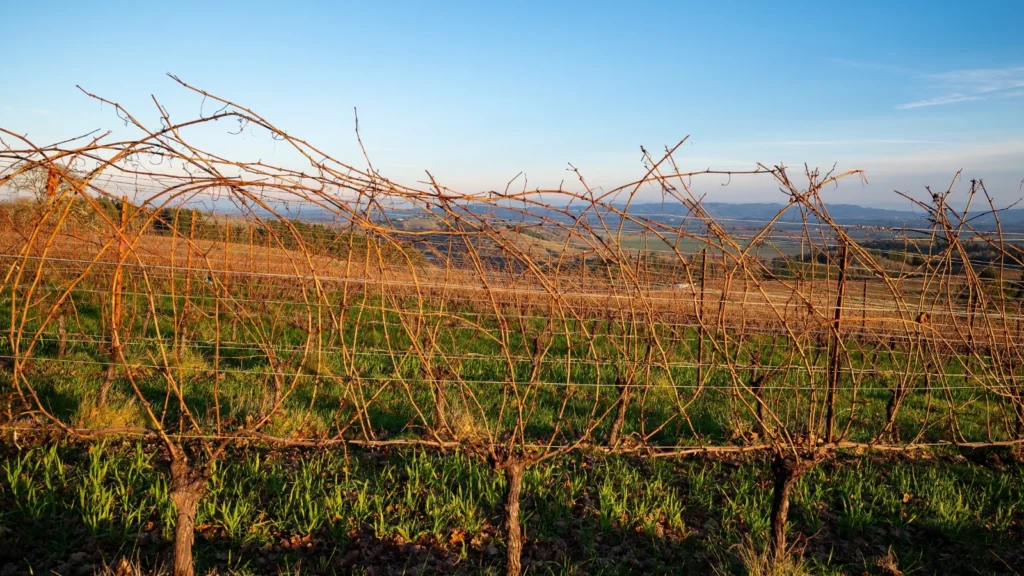
With fan training, stems grow upward along supports, while spurs at the base form future cordons.
This method is great for training vines on walls, trellises, or fences—similar to espalier. It’s especially good for weaker vines or upright-growing varieties.
Instead of horizontal cordons, the stems grow upward, fanning out like the ribs of a hand-held fan. At the trunk’s base, leave two or three spurs (with two buds each) to produce next year’s growth. Prune off everything else except the spurs and cordons.
Each year, you’ll replace old canes with new ones from the spurs. Over time, a healthy vine may support six to eight cordons—just make sure your trellis can handle the weight!
Arbor Training
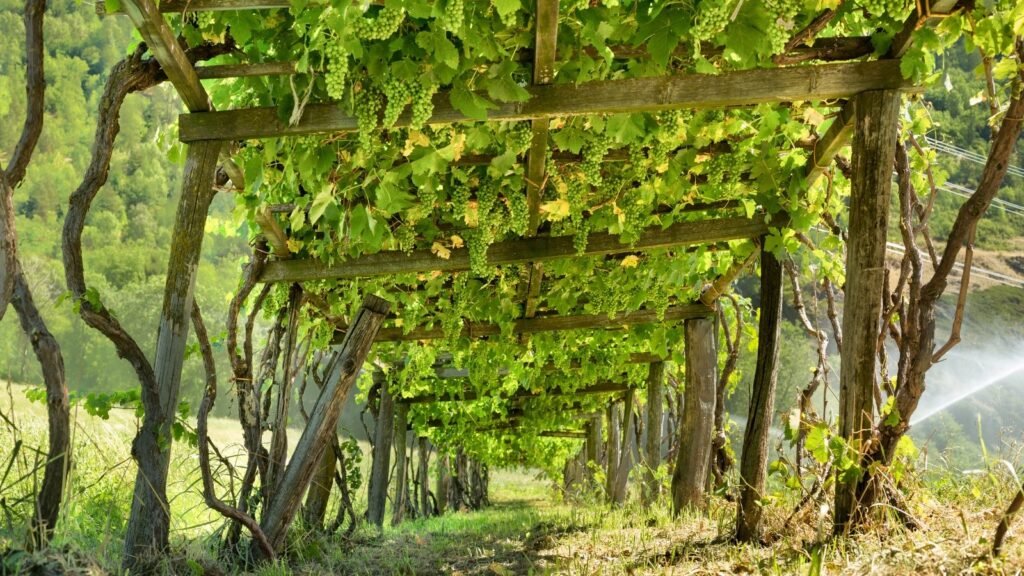
For arbors, train two vines up opposite sides to meet in the middle for full coverage.
I grow grapes on an arbor—it’s a fantastic way to get shade, beauty, and fruit all in one! The vines climb vertically, creating a leafy tunnel perfect for walking or sitting under.
Any sturdy arbor works, but wood or metal lasts longest. Plant two vines on opposite sides and let them grow toward each other for even coverage. You can even grow different varieties! (I have hops on one side and ‘Concord’ grapes on the other.)
While it’s tempting to let them grow wild, annual pruning keeps them productive. Choose a few main trunks to run along the arbor (never prune these—let them thicken over time). Space cordons about three feet apart along the trunks, and leave a few low spurs for next year’s growth.
Pruning Methods
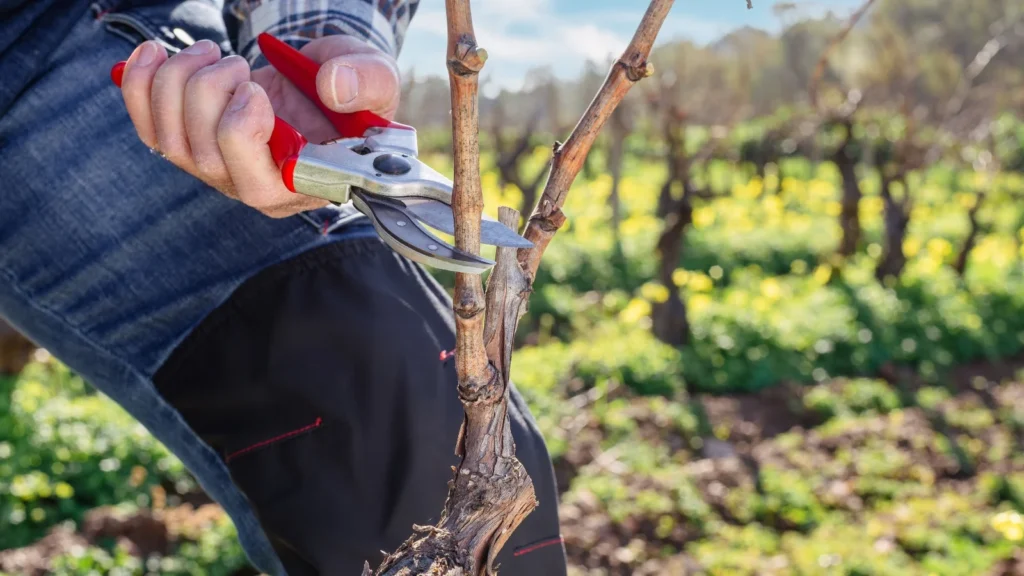
There are two main pruning styles: cane pruning (replacing old growth) and spur pruning (maintaining cordons).
You’ve got two options for pruning:
- Cane Pruning (described in the training systems above).
- Spur Pruning—a simpler alternative.
Pick the one that fits your training system (bilateral cordon, fan, or arbor).
Cane Pruning
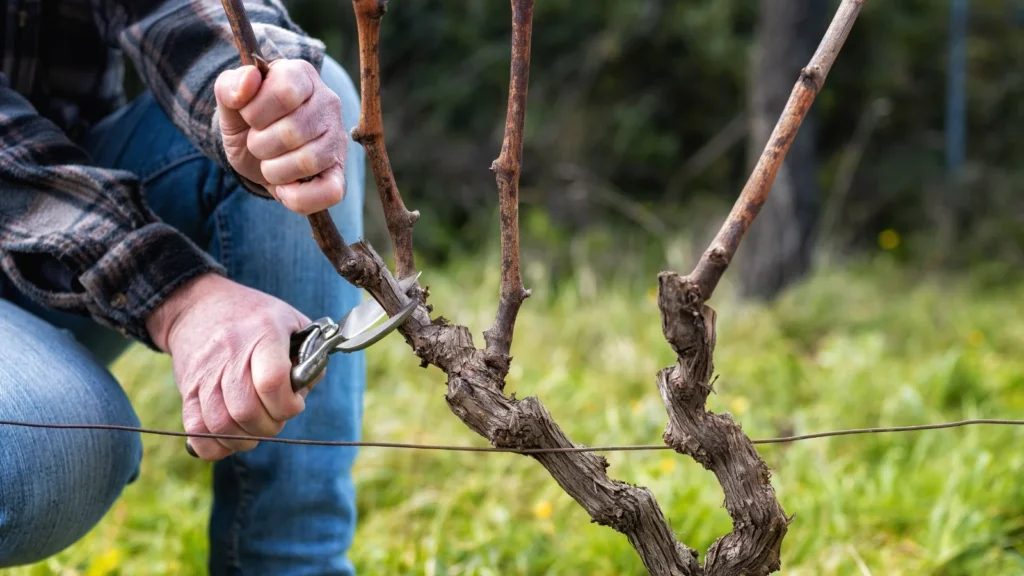
This method removes old growth, replacing horizontal cordons with new fruiting canes.
Here, you cut back anything older than two years and train new canes as cordons. The new growth produces fruit, while spurs near the trunk become next year’s canes.
It works well with bilateral cordon and fan training. Though it requires winter/spring work, it leads to heavy harvests by late summer.
Spur Pruning
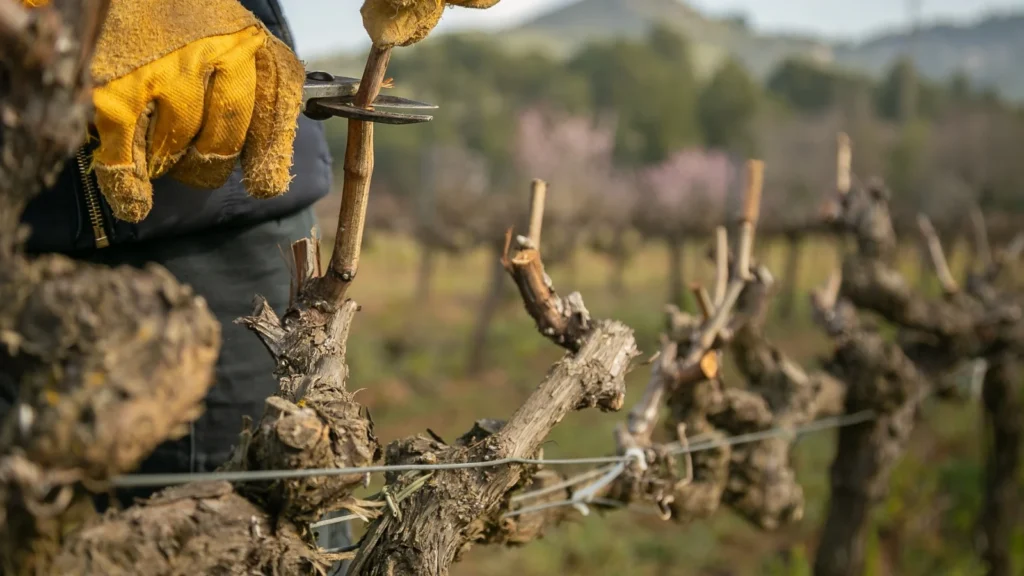
This method keeps thick cordons intact, with short spurs spaced along them for fruit production.
Spur pruning is simpler—you leave the main cordons in place, letting them grow thicker each year. Along them, keep short spurs (one every 3–4 inches) with two to three buds. These produce grapes while the cordons strengthen.
It works with any training system but is especially good for arbors. Just let the central trunk thicken and maintain short fruiting spurs along its length.
Pruning Tips
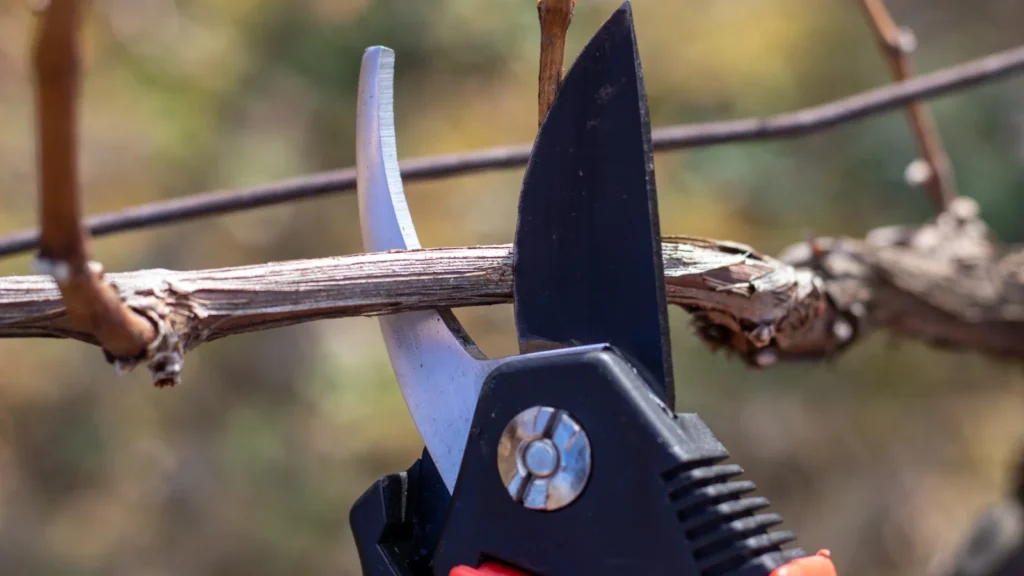
Always remove two-year-old overgrowth—excess length reduces fruit production.
Never skip pruning older growth (two years+). Left unchecked, grapevines focus on leafy growth instead of fruit. Long vines force the plant to waste energy sustaining them, weakening spur productivity.

